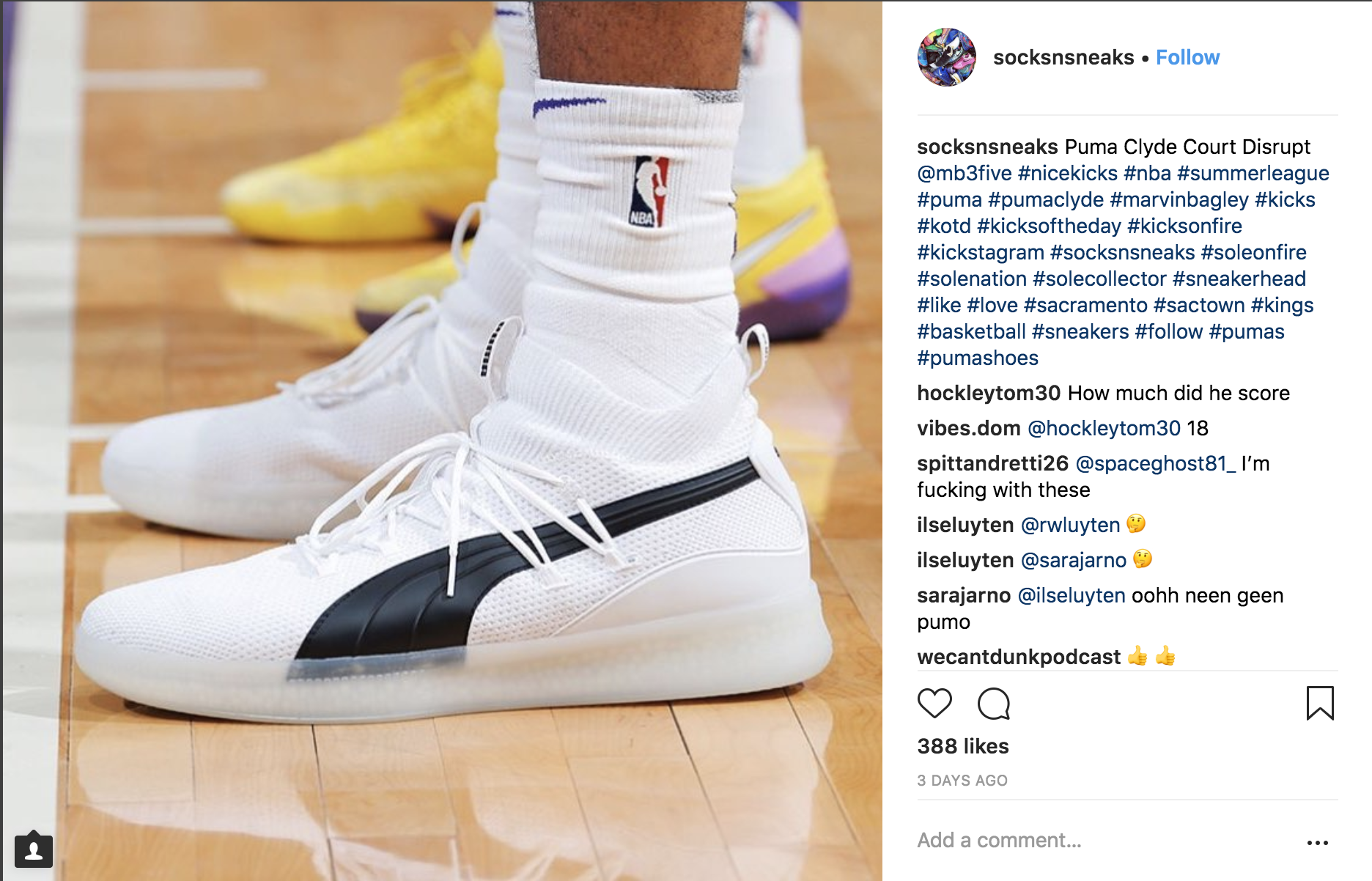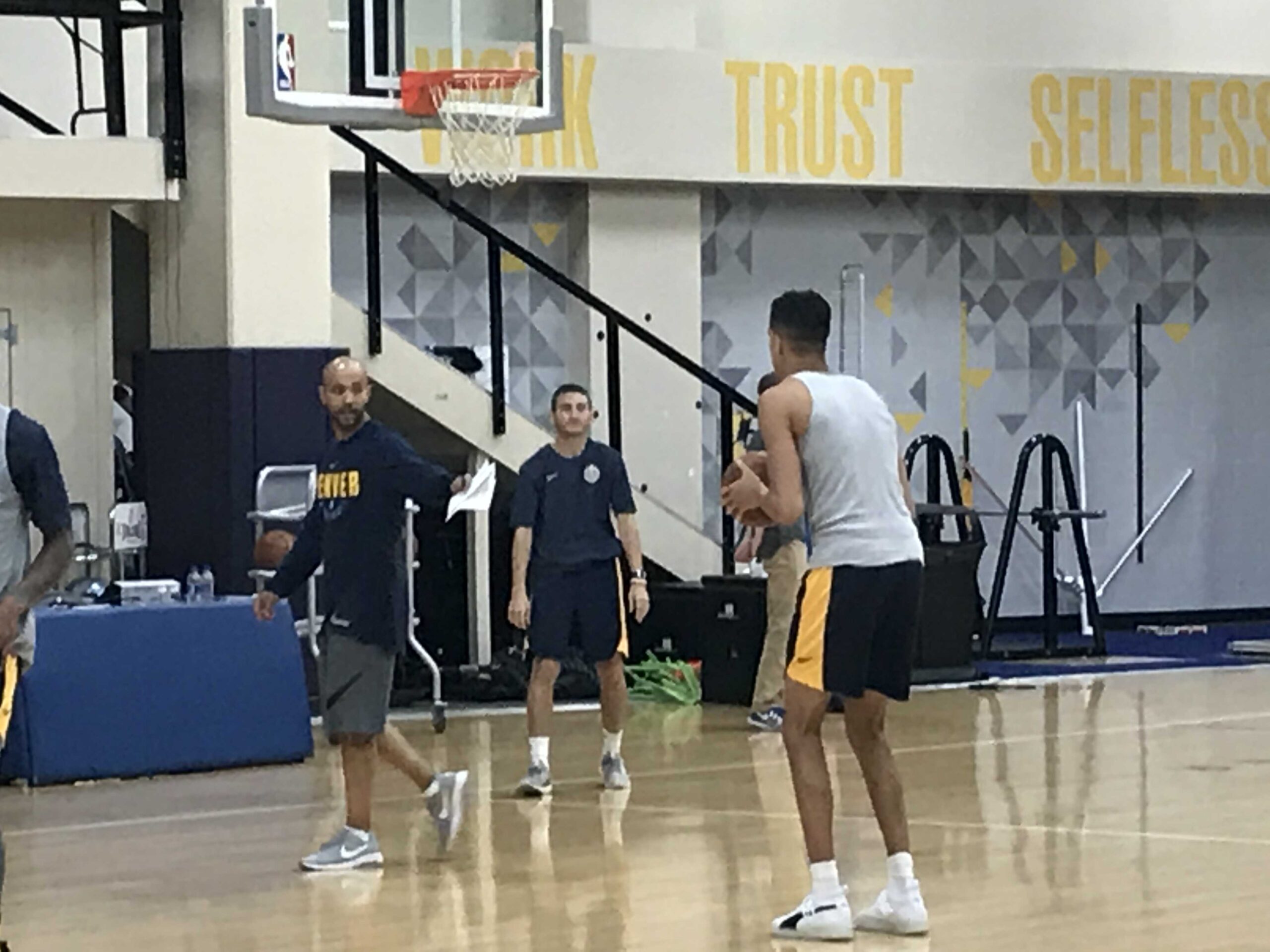© 2025 ALLCITY Network Inc.
All rights reserved.

Practice was wrapping up Wednesday when Michael Porter Jr. took the floor. On a side goal of the Nuggets’ practice facility, Porter offered everyone a small reminder of why he was the top-rated prospect in his high school class by sliding around the three-point arc and swishing one deep ball after another. Porter’s jumper looked impossibly smooth for a player who’s pushing 6-foot-11.
That silky stroke helped Porter become the fifth player ever to win MVP of the McDonald’s All-American Game and the Naismith and Gatorade National Player of the Year awards in the same year. It was also a reason why Puma, the German sportswear company, felt Porter was worth gambling on as it reentered the basketball shoe game after a two-decade hiatus.
In June, Puma announced it inked Deandre Ayton, Marvin Bagley III, Porter and Zhaire Smith to sponsorship agreements. The move caught many people by surprise; an NBA athlete hasn’t worn Pumas in a game since Vince Carter in the late 90s.
To understand why Puma made this aggressive push back into basketball, BSN Denver spoke to ESPN’s Nick DePaula, who has covered the intersection of kicks and hoops for the last 13 years. DePaula offered insight into why Porter agreed to a deal with Puma, what Puma learned from its falling out with Carter and how many pairs of sneakers DePaula has in his own closet. Here is the interview, which has been lightly edited and condensed for clarity.
BSN: Why did Puma decide to get back into the shoe game right now?
DePaula: It caught some people by surprise. It’s been the first time in 20 years that they’ve targeted signing an NBA player and will be operating in the basketball space. I think the big thing for Puma is that they’ve had a lot of momentum the last couple years in the music and lifestyle space and in women’s as well as with Rihanna of course. So kind of the progression from the music space is to really tap into the NBA.
Basketball has always kind of been an interesting sport. Puma way back in the day had a tie to the sport with (Knicks legend) Clyde Frazier and the Clyde model, which is kind of a timeless, classic shoe. But it hasn’t really had an imprint in the space lately. The biggest thing for them is they’ve learned a lot from the last time they were in the space, which was in 1998. They had Vince Carter, who they signed to a huge, huge deal. It was a 10-year deal at the time. Vince and Puma broke the deal after only his second season, and they were left without anybody to wear the shoe and were pretty much stuck. The thing we saw this time around was they wanted to be more measured and sign a handful of guys in the hopes that one of those guys develops into a Vince Carter-like player. They’ve had a huge sign off in terms of budget and being really aggressive with their offers. Definitely the financial package was a big part of the appeal for a lot of the players.
BSN: You just mentioned the financial package. Do you have any sense of what else was appealing to Michael Porter Jr. about Puma?
DePaula: I think in Michael’s case, you look at Nike and you look at Adidas. Nike has about 67 percent of the league wearing their shoes. Adidas has about 16 ½ percent. If you’re Michael, you look at those brands and say, ‘They have a ton of great players. Where am I going to fit in in terms of marketing?’ I think that was the appeal for Puma for those guys. Great financial package offer. The ability to be marketed as the new faces of Puma basketball as the brand is getting out of the gates here. And then also those guys are going to be featured in lifestyle campaigns across the board. Not just basketball campaigns. They’re going to be in different campaigns for a lot stuff. It’s not an unproven gamble with a brand that’s starting from scratch. Puma has I think 600 stores globally and a long tradition of putting out good stuff. I think it was less of a gamble than it seemed to some people too.
BSN: As you said, Vince Carter was the last NBA player to wear Pumas in a game. Why was that contract broken?
DePaula: Vince, he wore two shoes. There was Cell shoe, and there was a Vinsanity, which was his signature shoe. I think he had cold feet with where the products were at. They didn’t have a lot of innovation at the time, and Nike was just crushing it in terms of Foamposite and all the stuff they were launching at the time. I think it was partly that. The finance part of it, I think it was a 10-year deal for $50 million. It was an incredible offer at the time. There wasn’t as much interest from other brands. He had the Rookie of the Year season and was such an explosive high-flyer that all of a sudden the other brands were willing to make that much of a commitment. He was just looking for a way out. At the time he was going around saying that the shoes were hurting his feet and trying to make it more of a performance issue, but I think that he was more excited about the prospects of what Nike could do for him at the time.
BSN: How innovative is Puma considered with its current basketball shoe now?
DePaula: If you look back at the Puma effort 20 years ago with Vince, they were releasing a white shoe with a black stripe and a black shoe with a white stripe. The colorways were very tame. The product wasn’t all that compelling. For this round with the Clyde Court, they’re going to have a lot of knit versions. There’s a clear insole that’s more interesting. They’re going to have all kinds of colorways and graphics that come to life. I think for the players, and Deandre Ayton in particular, he’s looking to have a lot of loud graphics. They’re going to let the players be expressive and have a lot of creative input on their shoes. Maybe some of those guys wouldn’t have had the opportunity to do that if they signed with Nike or signed with Adidas. I think they’re going to have a lot of fun with it. They’ve got some really good young designers who are working on interesting stuff for the future stuff as well. This first shoe I think some people maybe thought was basic because it’s just a modernized update of the Clydes, but I think going forward they’re going to be looking to be doing a lot of bold designs and really expressive stuff.

BSN: How long was this plan in the works to roll out with this particular draft class?
DePaula: The timeline came out of nowhere for a lot of people, but behind the scenes, it’s been in the works for over a year now. They targeted this fall as the time they’d relaunch. The way sneaker deals work is the rookies are eligible to sign deals right after they turn pro and leave school. It usually happens right around the draft. And then for established guys who are already in the league, those deals expire in October. It’s not just like they’re going to sign rookies. They’re going to go after some established guys as well and have a good balance once the season starts.
BSN: Michael Porter Jr. was wearing the Clyde Court Disrupts the other day in practice when he was shooting. Will all of the guys wear that shoe when they’re hooping or are there plans to unveil signature shoes this year?
DePaula: When they were pitching guys, they weren’t specifically offering guys a signature shoe. They were pitching Trae Young and Colin Sexton and some other players in the draft. None of the guys were offered a signature shoe. The plan was for everybody to support and wear the Clyde Court. And then having said that, I would expect for the second half of the year them having guys wear something during the Rookie Challenge game. All-Star Weekend is kind of the launch point for whatever the next shoe is. For this fall, the Clyde Court is going to be their big push and is available at Eastbay and Foot Locker and stuff like that. I think they’re going to be priced at $120. They’re kind of putting everything behind that model here, and they’ll have other models going forward for sure.
BSN: What’s the early reaction to the Clyde Court among people who really care about sneakers?
DePaula: The feedback has been mixed. Some people thought it was kind of safe to just do the knit upper on the Clyde, but at the same time, the feedback has been strong. Marvin Bagley has most visibly been wearing the shoe on social media. Kings message boards and Kings Instagram pages seem to like them. I would say the response has been pretty solid. I’m pretty excited to see what they do here. Some people are less optimistic than me, but they’re going to very aggressive about who they go out and look to sign.

BSN: I’m sure you get this question a lot. How many pairs of shoes do you own?
DePaula: My mom asks me all the time. I’m always embarrassed to say. I’d hate to give you an exact number because it’s up there. It’s a little over 700.
BSN: How big is your closet?
DePaula: It’s funny you ask that. Literally this week I’ve been going through and picking stuff to either set aside or donate. I have a call with a foster home organization out here in Portland. I’m going to try to donate as much as I can for the upcoming school year for some kids. I’ve got a two bedroom spot and a whole basement. My friends always tease me and say that my basement looks like a Foot Locker stock room. It’s lined with sneakers all over the place.
Comments
Share your thoughts
Join the conversation



